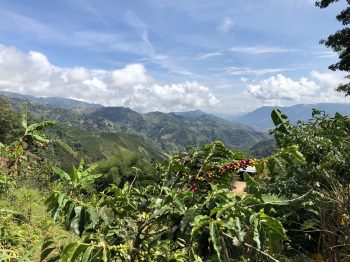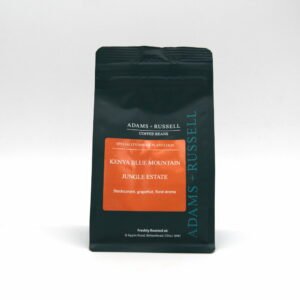What is Single Plantation coffee?
- Updated on: March 7, 2024
- Written by: Aimee Bennett
Aimee is a coffee enthusiast and has worked in the coffee industry for years. She sources coffee beans from around the world and her coffee journey began in… (read more).

Do you want to just drink your coffee? Or do you want to know which specific farm it came from, or the family who cultivated it? What about the female-led cooperatives with pay and accountancy transparency? The days of brewing a cup of coffee without caring where it’s come from are far behind us. More and more people are choosing Single Plantation coffees, and it’s time to look at why that is.
Single Origin Vs Single Plantation: The Differences Explained.
- Single Origin: The beans are sourced from one particular region. With this comes undeniable differences in flavour for example beans harvested in Northern regions will taste drastically different to those harvested in the South. They represent the flavour profile of a specific area, but are not nearly as distinctive as Single Plantation or Microlots can be.
- Single Plantation: Known for their quality, distinct flavour profile and unique characteristics. Single Plantation coffees are sourced from singular farms or cooperatives.
- Micolot: Sourced from a single plot on a farm. Due to the care and attention given by the farmers, they often achieve a high SCA cup core. Each harvest is limited, often yielding between 40 – 125kg
Why Is Single Plantation Coffee Important?
Let’s take Cooperatives as an example. Local Cooperatives often take coffees from different farmers to process as a single lot. This helps the farmers achieve a better price for their coffee as some only produce a few kilos per harvest. All of the Cooperatives we source from at Adams + Russell have strict quality requirements, with regulatory measures in place that keep track of production and harvesting methods. When a high quality lot is identified- members are often given a financial reward. This is often directly reinvested into preparing for the next season as well as new and experimental processing methods.
Consequently, this makes the coffee more expensive. This is for a few reasons; as with all products produced in small batches, costs naturally increase. Secondly (and most importantly) the increased cost is indicative of the farmer achieving a fair price. Generally, farmers who are members of a Cooperative receive up to 100% more per kilo than those not part of a Cooperative. They’re also permitted a better quality of life as educational and healthcare resources receive significant investment.
Finally, there’s better market visibility and opportunities for the growers. In December 2022, we received 3 Microlot coffees sourced from the ASOPEP Association in Colombia. This Association is the perfect example of how life changing the Cooperative model can be. Founder and current manager Camilo Enciso has created relationships with small Cooperatives over the course of a decade, creating the largest Association in Tolima. This has given the local farmers an opportunity to travel outside of their region to trade shows and coffee events around the country- opportunities that would not have been viable if not part of the association. View the ASOPEP Association bundle here.
Why Should I Buy Single Plantation Coffee?
In short, the more traceable the coffee is, the more we can learn about it. Farm location, elevation, soil quality and climate are all interesting factors, but they also coalesce and inform how the coffee will be harvested and processed.
If the farmer’s name is on the bag, we’re instantly more connected to what we’re drinking. You can learn about the lives of the people involved in growing the coffee. As well as being traceable to a really specific point, Plantation coffees often have official certifications such as Fairtrade, which is further evidence that it has been sustainably grown and produced.
Flavour:
Every single element of how the coffee has been produced and processed has a strong impact on its character and flavour profile. From floral and tea-like to juicy and winey, there’s a huge scope for nuanced flavour to shine through.
Processing:
From Anaerobic Fermentation to Carbonic Maceration. Or a sweet, crisp washed. Some farmers use the off season as time to experiment with their methods of processing, often extended fermentation times from anywhere between 48 hours – 1 week. And sometimes, they ferment them for a second time (See Colombia El Jardin)






